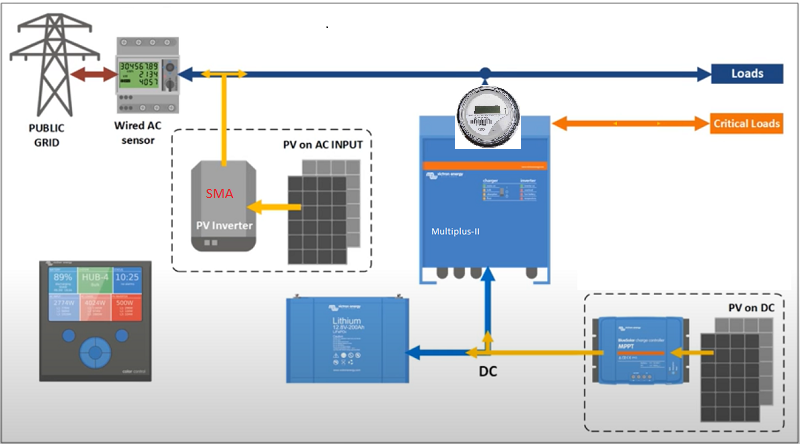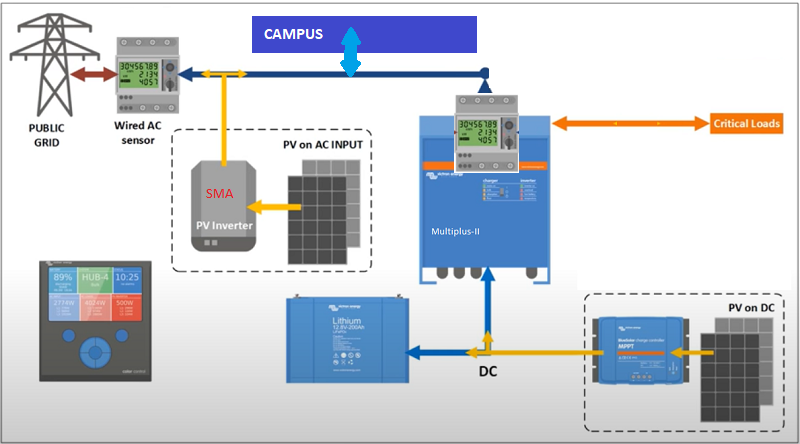I am investigating the use of a Multiplus-II in the scenario illustrated below and have a couple of questions. The SMA inverter is already in place and I do not own it so therefore do not have the option to move it. I would be adding everything else in the schematic.
1) To power the critical loads, I want the power to come from the PV on DC array first, then the battery, then the PV on AC Array, then the grid. Is that possible?
2) To power the normal loads, I want the power to come from either of the PV arrays, then the grid, but never from the battery. Is that possible?
3) With the SMA and Victron inverters on the same circuit, will there be any issues such as anti-islanding conflicts?
4) On a very rare occasion, the SMA will push power to the grid. With the AC sensor installed, I am assuming the Victron will push zero power out as the net overall demand reaches zero. If the SMA were to continue to push out power to the grid, will there be any adverse effects to the Victron? Will it just stay at zero output without generating an error?
5) In a slightly different configuration, is it possible to set the ESS system to allow a certain amount of power to the grid? Say for example 2kWh?



